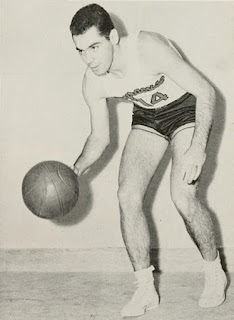I'm not a poet, so I asked AI to put something together a couple poems for me with some guidance. Some miscues, but better than what I'd do. I thought the first was more poetic and in the spirit, but the second more factually correct. Enjoy!
Version 1
'Twas the night before tip-off, in Syracuse so bright,
Not a creature was stirring, not even a snowflake in flight.
The jerseys were hung in the lockers with care,
In hopes that a victory soon would be there.
The Orange faithful nestled all snug in their beds,
While visions of three-pointers danced in their heads.
With memories of greatness, so storied and vast,
A legacy of triumph, from the present to past.
In the Carrier Dome, where the Orange call home,
Echoes of greatness forever are known.
From the Pearl's half-court magic, a legend so bold,
To Roosevelt Bouie and Louis Orr, pure orange and gold.
Six overtimes etched in the annals of lore,
Against Connecticut, a battle galore.
Sherman Douglas dishing, with grace and with flair,
To Steven Thompson, soaring through the air.
Dave Bing's brilliance, Vic Hanson's might,
Billy Gabor's grace, oh what a sight.
GMac's sharpshooting, from beyond the arc,
Three-pointers falling, lighting the dark.
In the annals of history, a name that does ring,
Carmelo Anthony, oh how he'd swing.
A champion's heart, a prodigious might,
For Syracuse, he'd shine so bright.
And Hakeem Warrick, with wings unfurled,
A blocked shot heard 'round the basketball world.
In the waning moments, with destiny stark,
Sealing the victory, leaving a mark.
As the orange and blue take the court once again,
With memories of glory, and dreams to attain.
In the heart of New York, where legends are spun,
The Orange march on, their story not done.
So here's to the Orange, to victories in flight,
Merry basketball to all, and to all a good night!
Version 2
'Twas the night before tip-off, in the Dome so grand,
Not a creature was stirring, across Orange land.
The jerseys were hung in the locker room with care,
In hopes that victory soon would be there.
The fans were nestled all snug in their seats,
With visions of greatness, and history to meet.
And Coach in his jacket, with clipboard in hand,
Prepared for the battle, a game to withstand.
When out on the court, there arose such a clatter,
Orange faithful sprang up to see what was the matter.
Away to the sidelines, they flew in a flash,
Cheering for Syracuse, their beloved Orange clash.
The Pearl at half court, a magician with the ball,
Dribbling and weaving, leaving defenders in a sprawl.
With a flick of his wrist, a shot from afar,
A lengthy shot splashed, like a shooting star.
Roosevelt Bouie and Louis Orr, giants of the past,
Legends of Orange, memories that forever last.
Six overtimes against UConn, a battle for the ages,
Heart-stopping moments, written in the basketball pages.
Sherman Douglas dishing, to Steven Thompson so fleet,
A connection so potent, opponents faced defeat.
Dave Bing's smooth moves, Vic Hanson's grace,
Billy Gabor's brilliance, each a legend to embrace.
GMac's three-point shooting, a rain of threes,
From beyond the arc, setting nets at ease.
Carmelo Anthony, a name that shines bright,
A national championship, a crowning delight.
And in the Dome's rafters, Hakeem Warrick's block,
A moment in time, like a ticking clock.
A rejection so powerful, a title to secure,
A symbol of Orange strength, forever endure.
So here's to the Orange, past and present combined,
A legacy of triumph, in each game defined.
As the ball tips off, and the crowd starts to roar,
Merry basketball to all, forever Orange, evermore!




